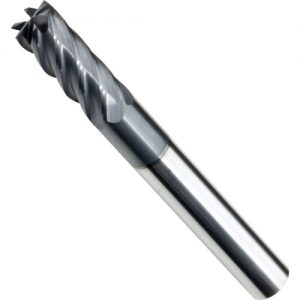With the right tools, even a 10 or 15 horsepower machine can make competitive metal disassembly, thus reducing the installation and greater flexibility of the workshop.
Closer to completion
A semi – completed or completed cut provides new possibilities for semi-finished or completed cutting using a rounded insert. When using a 90-degree tool for roughing it, each step (or at each of the z-grade roughness) leaves a “step”. The heavier the depth of each cut, the more obvious the ladder effect. The resulting uneven surface will result in uneven pressure of the semi-finished product. This impact tool also causes a shift of deflection, making direct progress from rough to end. Not only do you need a semi-finished product, but you need to do it multiple times.
Using round insertion greatly reduces this effect. On the steps of the 90-degree tool, there are smaller “scallops”, which are lower and easier to pass. This effect is complementary, because circular insertion is optimal in a lighter cut depth, because the lighter depth makes the fan less noticeable. The remaining remainder is more evenly distributed after the roughness, and in some cases can be done without a semi – finished product.
The production of large diameter holes is a common application in many stores, and there are many ways to achieve the ultimate effect. However, there are usually many obstacles to effectively completing this process. In these types of applications, the power consumption is often a problem, especially in the more common 20 horsepower and the following machine tools. These machines have a high speed and speed, but in order to achieve rapid motion, rigidity is sacrificed. Using traditional methods, making large diameter holes is difficult for machine tools and tools. This fact creates a smoother way to keep the holes in the necessary cycles to stay competitive.
